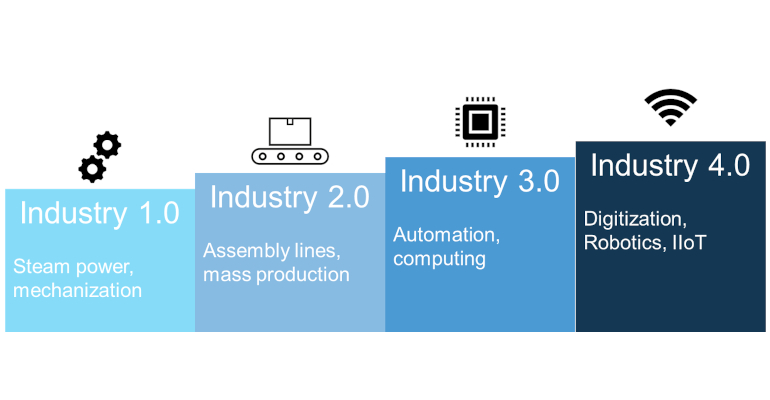
4.0 Understanding and evaluating industry technologies, monitoring the extent to which competitors are adopting smart technologies, and determining what is right for your business are challenging and important tasks for medical device managers. Trying to translate that vision into a multi-year investment and technology implementation plan is even more difficult. As a starting point, this article summarizes the trends, benefits and challenges of Industry 4.0, sometimes referred to as the fourth industrial revolution.
What is Industry 4.0?
Industry 4.0 is the digitization of manufacturing using advanced technologies, including the Industrial Internet of Things (IIoT), sensors, robotics, sophisticated cloud infrastructure, and next-generation software systems. At the heart of Industry 4.0 is the collection and use of business data contained in data to improve business practices.

Benefits of Industry 4.0
The potential benefits of Industry 4.0 technologies are significant: cost savings, improved quality, efficiency and potential revenue growth. The table below shows how these benefits are realized through the specific application of Industry 4.0 technologies.

The scale of these benefits varies depending on the key business indicators, the level of adoption of Industry 4.0 and the nature of the business. Manufacturing-oriented companies usually benefit the most. The table below shows the preference ranges for the manufacturing companies.

The industries most likely to adopt Industry 4.0 are manufacturing, aerospace and defense, automotive and transportation, energy and utilities, consumer goods and life sciences.
Problems of applying Industry 4.0 technology
Although many organizations have adopted Industry 4.0 technologies, their implementation worldwide is not without challenges. Scale of capital investment, managing cyber security and managing change are some of the challenges facing companies using these technologies.
investment
Industry 4.0 technologies can be applied at different levels. Depending on the complexity of the implementation, the cost can vary from a small temporary capital purchase to a major long-term investment. On the simple side, implementation can be as small as installing cobots or IIoT sensors on an assembly line. Although the costs of these simple examples are lower, the expected benefits are also lower.
On the more difficult side, implementing Industry 4.0 can be as difficult as building a fully automated lighting factory that operates 24/7. The costs of acquiring and integrating hardware, infrastructure and technology for large-scale Industry 4.0 applications can be significant. Although these costs may seem high at first glance, the benefits of reduced costs, faster time to market, better quality and greater manufacturing flexibility can be enough to offset and justify the investment.
cyber security
The more data you transfer into cyberspace, the more likely it is to be accidentally hacked or fall into the wrong hands. Sophisticated digital connected IIoT networks transmit data from individual machines to central hubs, the cloud, and other areas of smart manufacturing. The job of cyber security is to protect intellectual property and sensitive operational data. As Industry 4.0 machines and devices emerge, it is equally important to ensure that your cybersecurity protocols, systems and capabilities are strong enough to protect sensitive data.
Change management
Industry 4.0 often involves advanced technology, hardware and software coexisting with people. The implementation of advanced systems means that the way we work both in the factory and in the office will change. Implementation of advanced and new technologies will require training of unfamiliar workers. Some employees may feel intimidated or threatened by new technologies, but the goal of Industry 4.0 is to make daily operations more efficient, allowing all employees to achieve greater productivity by focusing on a higher level than standard and repetitive procedures. it is done manually. robot or intelligent software. Identifying workforce skills that can add value when combined with smart technologies is key to accelerating the transition to Industry 4.0 technologies.
Staying competitive in the rapidly changing world of manufacturing requires constant evaluation of new technologies to improve productivity and efficiency. Industry 4.0 and the technologies it includes are the next opportunity for significant progress.
